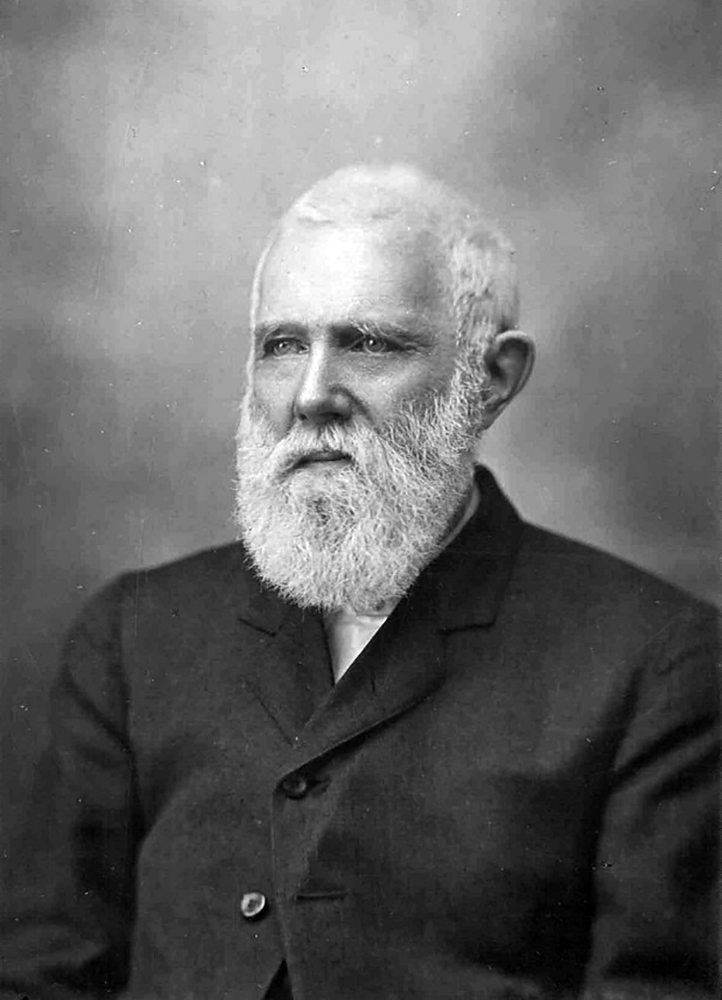Who the Heck Was Johan Hvoslef?
Johan Christian Hvoslef was born in Norway in 1839. After graduating from the University of Norway, he came to the United States and settled in Chicago to attend Rush Medical College in 1872. After successfully completing the program, he moved to Lanesboro and started a medical practice in 1876. In his free time, Hvoslef became an avid naturalist and keen ornithologist who spent hours in the woods and fields around Lanesboro recording observations in his journal.
Hvoslef married Karen Anderson–a Lanesboro native–and they had a daughter, Agnes, in 1892. Agnes was the apple of her father’s eye and often joined him in exploring the natural world around Lanesboro. Sadly, little Agnes died in 1898 after what the newspaper described as a brief, but painful bout of pneumonia.
The couple was devastated by the loss of their only child. Hvoslef found some comfort in spending more time outdoors observing nature and recording what he saw into his notebook. Each morning he would wake and then transcribe observations from the previous night and early morning into his journal. He’d then walk to Lanesboro Cemetery to visit the grave of Agnes before seeing patients in his office or setting off for home visits.


Between 1881 to 1918, Hvoslef filled 56 notebooks with accounts of his daily activities, world events, local weather, wildlife, birds, and plants. Spring migration in the Root River valley kept him busy as he dutifully watched for the arrival of warblers, sparrows, and butterflies, along with the emergence of native plants and flowers.
Hvoslef’s journals include many reports of watching birds early each morning from his boathouse on Mill Pond Lake. From his perch, he observed pelicans, cormorants, gulls, terns, more than a dozen species of ducks, and 25 species of shorebirds.
Hvoslef’s boathouse is gone, and the lake slowly disappeared as it filled with farmland silt runoff carried by the Root River. Most of the water birds the doctor saw there have also disappeared from the area. While making housecalls in the countryside surrounding Lanesboro, he recorded finding prairie favorites like pasque flowers, prairie smoke, wild indigo, and prairie-clovers. Now, corn and soybeans dominate those fields.
There are likely few places that Hvoslef would still recognize around Lanesboro. However, one of the places he would happily know again is a spot where he once recorded Dodecatheon meadia, commonly known as shooting stars, blooming each May. Today, that place is protected as part of the Dr. Johan C. Hvoslef State Wildlife Management Area. The Minnesota DNR describes the WMA as: “Mixed hardwood hillsides of oak, hickory, maple, basswood, ash, walnut and conifer plantations. The south fork of the Root River dissects the south boundary.” It is a spot well-known for catching the spring and fall bird migration and one can almost picture Dr. Hvoslef there with his notebook to record it all.
Hvoslef’s journals reach through several decades to remind us of the wildlife and habitat that has been lost to urban sprawl, logging, and farming. But the journals also show us the impact of preserving natural places to enjoy now, and for future generations of Minnesotans.
Heart issues and diminishing eyesight not only kept Hvoslef from seeing his patients, but also kept him out of the fields during the last few years of his life. In a 1919 letter to friend and fellow ornithologist Thomas Sadler Roberts, Hvoslef stated: “That this should last much longer, I do not think possible, nor do I wish it, to be sure. And yet, I may still have to live for some time. If that should happen, I shall indeed never forget those happy hours when undisturbed, in the stillness of nature I could enjoy the sight of the pretty birds and listen to their chattering of songs.”
Dr. Hvoslef died on October 11, 1920, in Lanesboro. After settling his estate, Karen donated his journals to the Bell Museum at the University of Minnesota.
